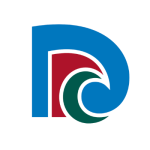Stay clear of wave measuring equipment, boaties warned
A special directive has been issued requiring all vessels to stay at least 100 metres clear of sensitive wave measuring equipment used to decide whether oil tankers and other large vessels can safely enter Whangarei Harbour.
Tanker entering Whangarei Harbour.
Chidambaram Surendran, the Northland Regional Council’s Deputy Harbourmaster, says the ‘harbourmaster’s direction’ has been issued to prevent damage to the Wave Rider Buoy (WRB) system and to prevent the disruption of data the sensitive buoys are collecting. One of the buoys which forms part of the expensive system was struck and damaged recently.
The WRB system consists of two wave rider buoys and a special mark buoy that are permanently located on the northern side of the Whangarei Harbour shipping channel midway between the Fairway Buoy and No.1 Buoy.
The system forms a critical part of a ‘Dynamic Under-Keel Clearance’ system used in the harbour to accurately predict the clearance between a ship’s keel and the seabed and helps prevent potentially disastrous groundings, especially in poor weather or unusual tides.
Mr Surendran says with the harbour home to deep water jetties and wharves operated by both Refining NZ and Northport, it’s critical to protect the sophisticated WRB system from damage.
He says the harbourmaster’s directive applies to all vessels navigating in the harbour, which must now keep at least 100 metres clear of the following WRB system buoys depicted on charts NZ 5219 and NZ5214:
• WRB A in position 350 52.986’ S / 1740 32.888’ E
• WRB B in position 350 53.015’ S / 1740 32.912’ E
• Special Mark Buoy in position 350 52.987’ S / 1740 32.922’ E
“Vessels must also not attempt to enter or leave the channel between the Fairway Buoy and No. 1 Buoy.”
Mr Surendran says as well as sea and swell data from the wave rider buoys, the Dynamic Under-Keel Clearance system also uses tidal data from the Marsden Point tide gauge, sea level information from a monitoring station located on Frenchman Island, manual inputs of hydrographic survey data and individual vessel information.
He says a yellow ‘special mark buoy’ is positioned to the north of the two wave rider buoys at an equal distance from both.
“The special mark buoy – which has a three nautical mile range light – is deployed to indicate the position of the two smaller wave rider buoys and is higher and more visible than them as they sit very low in the water. The WRBs have one nautical mile range lights.”
“It’s also worth reminding boaties and smaller commercial vessels in Whangarei Harbour (those under 500 gross tonnage) that they are obliged to keep out of the way of larger commercial ships navigating in the main channel, for obvious safety reasons.”
